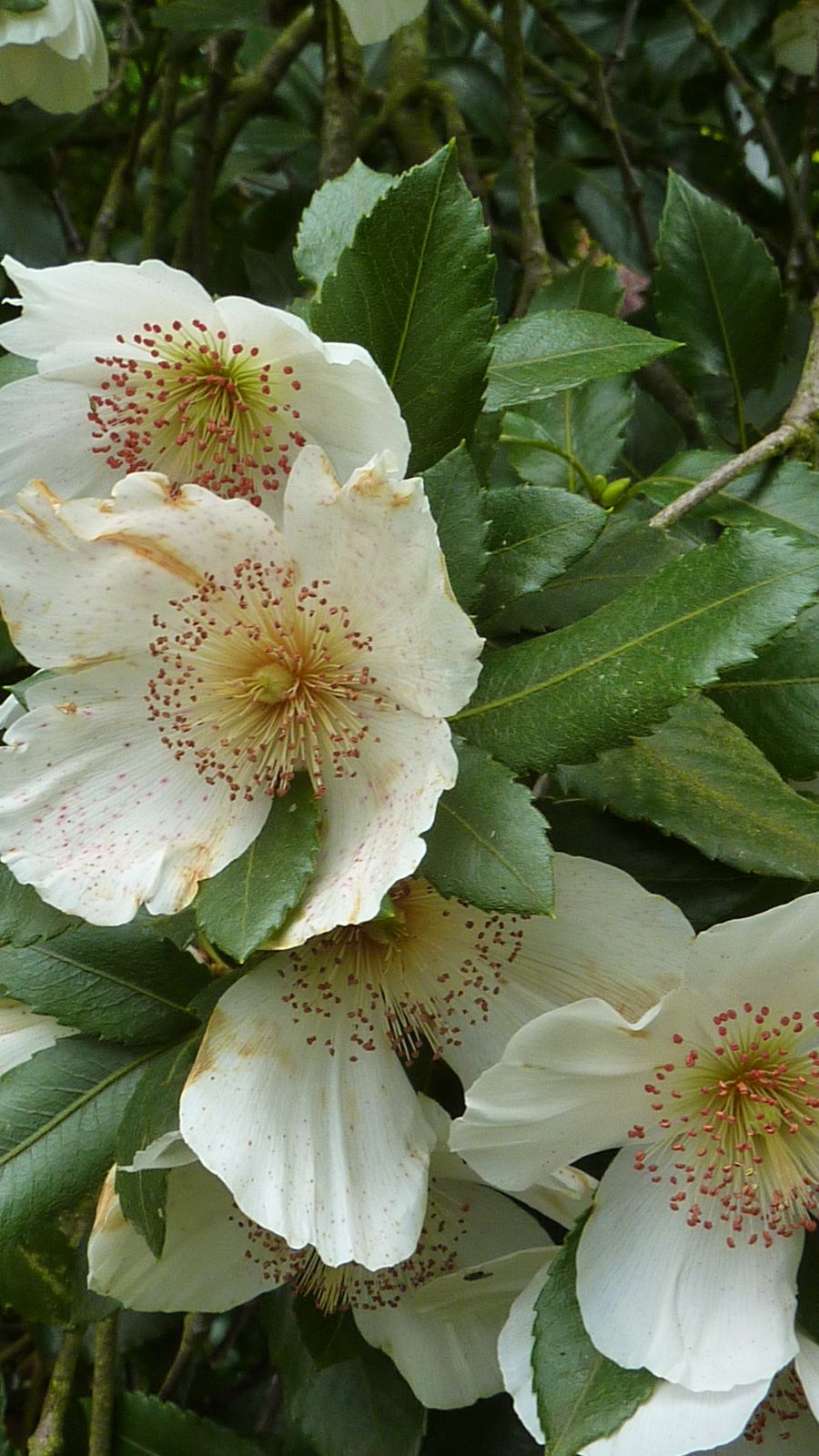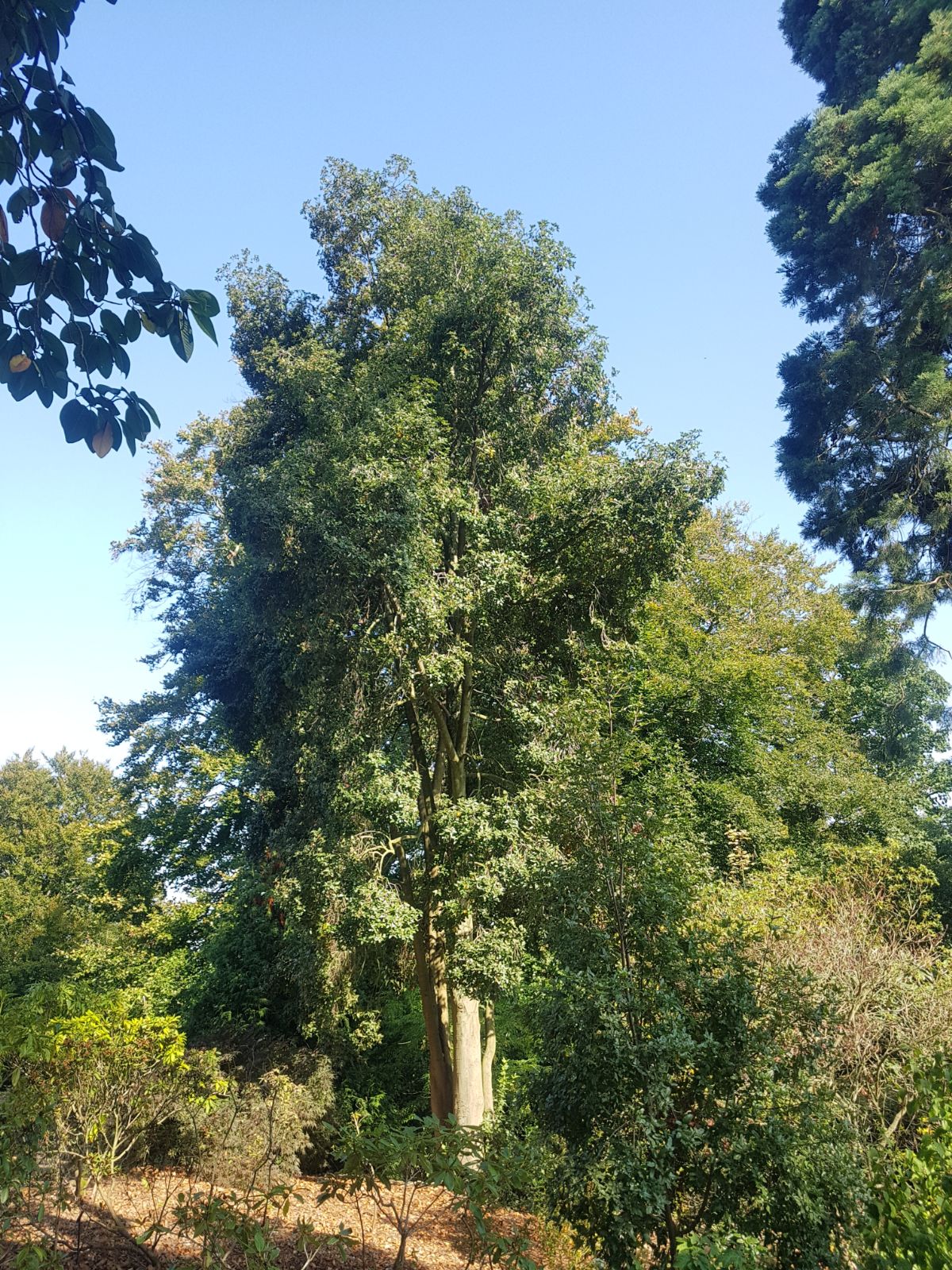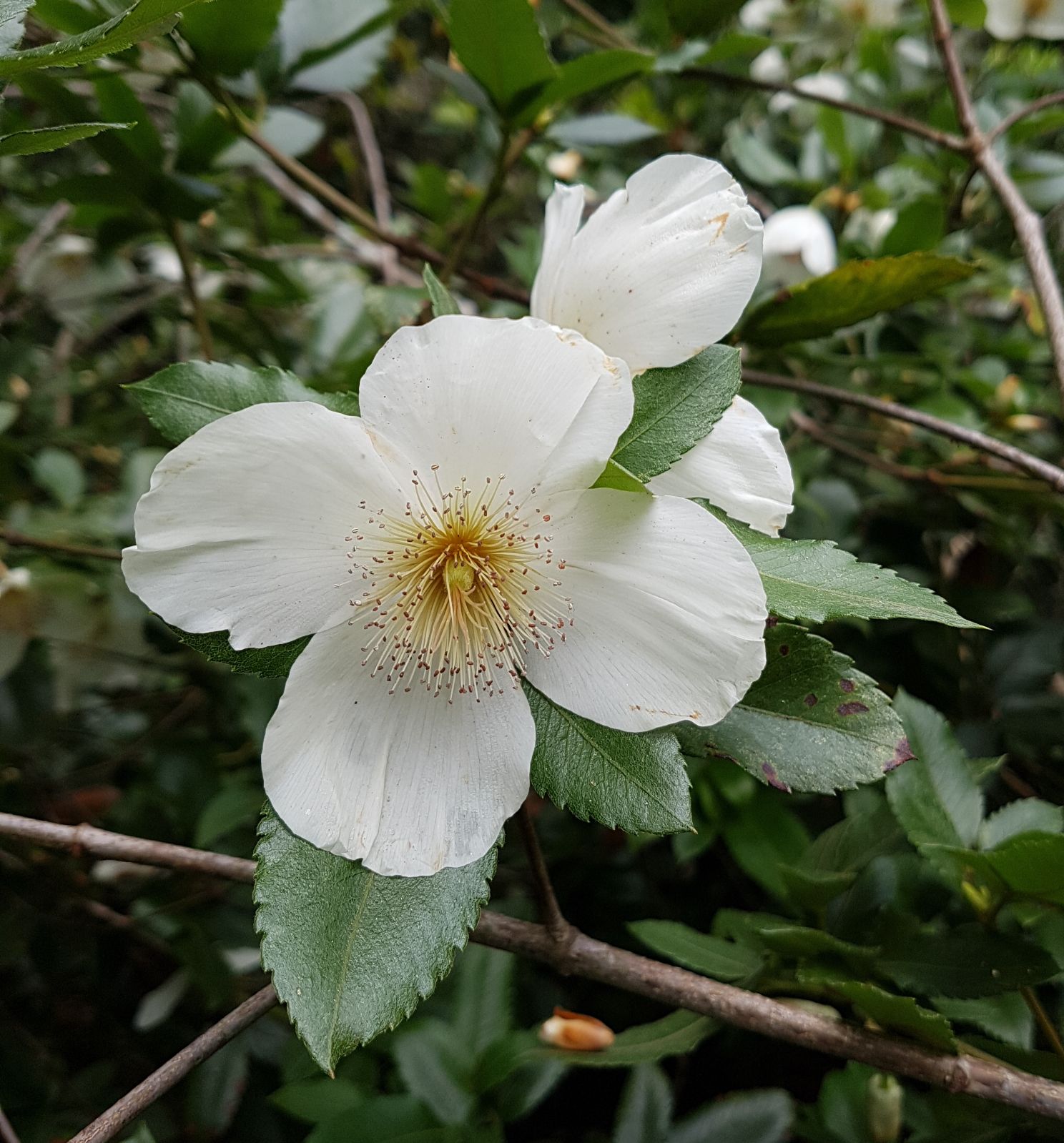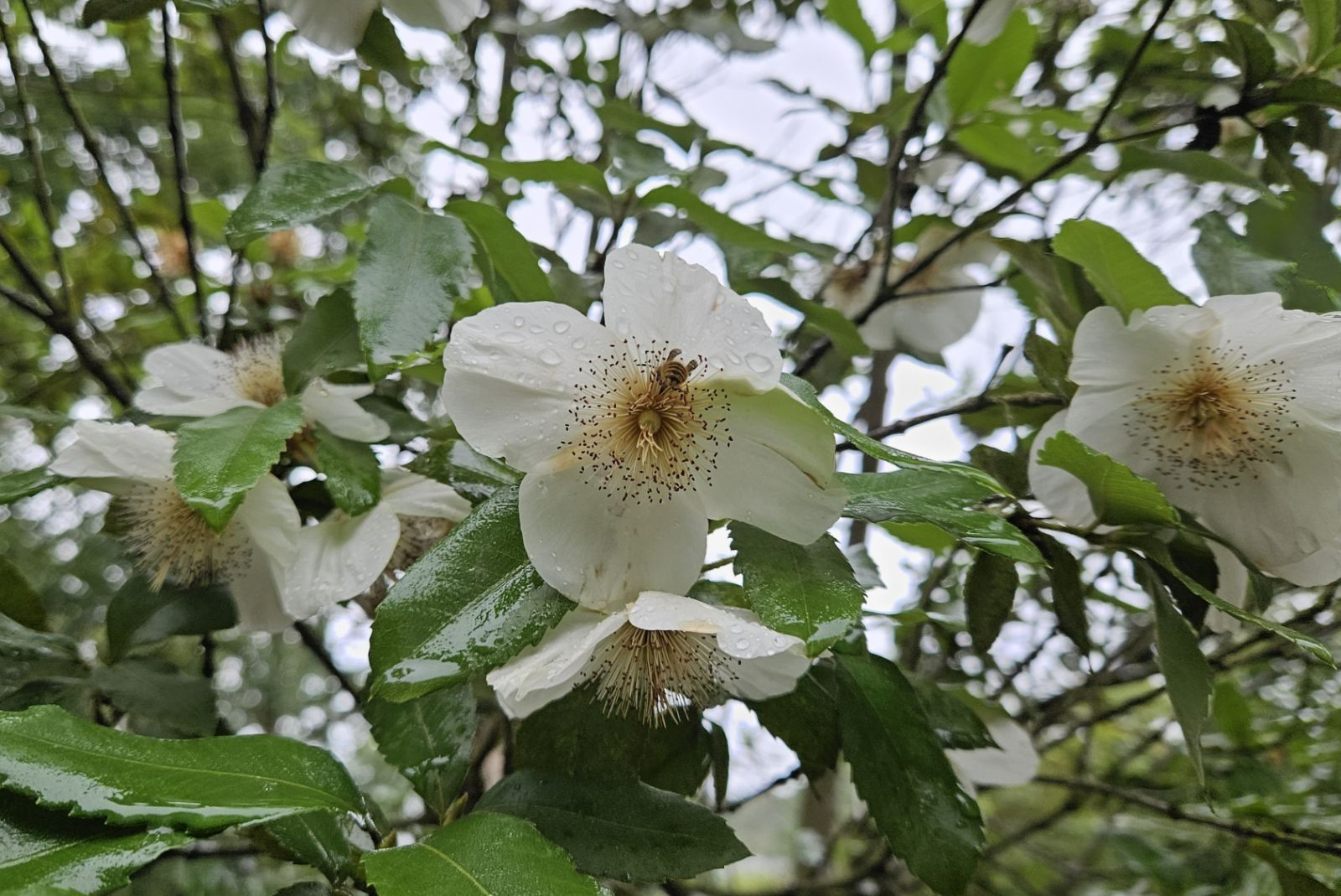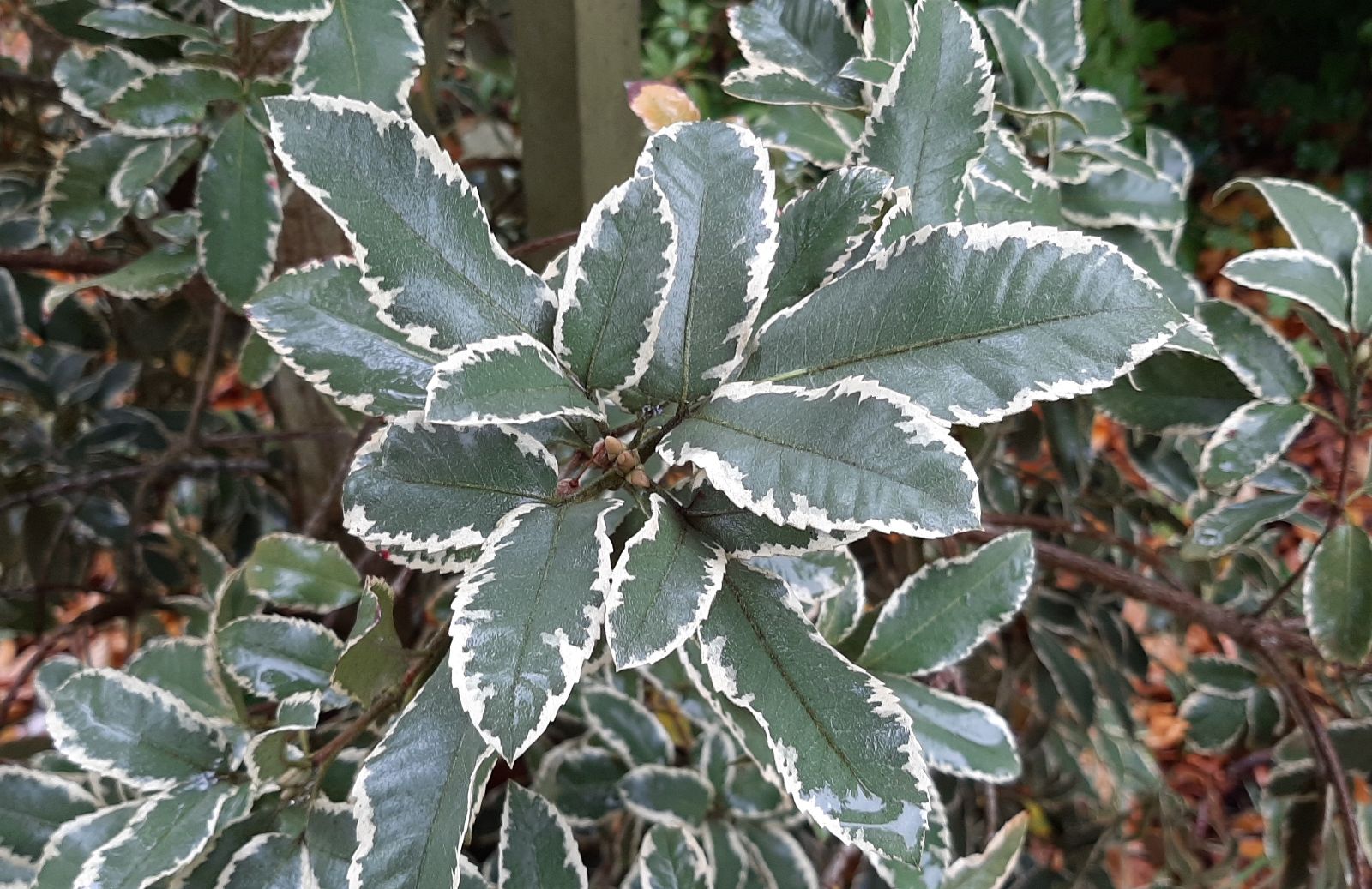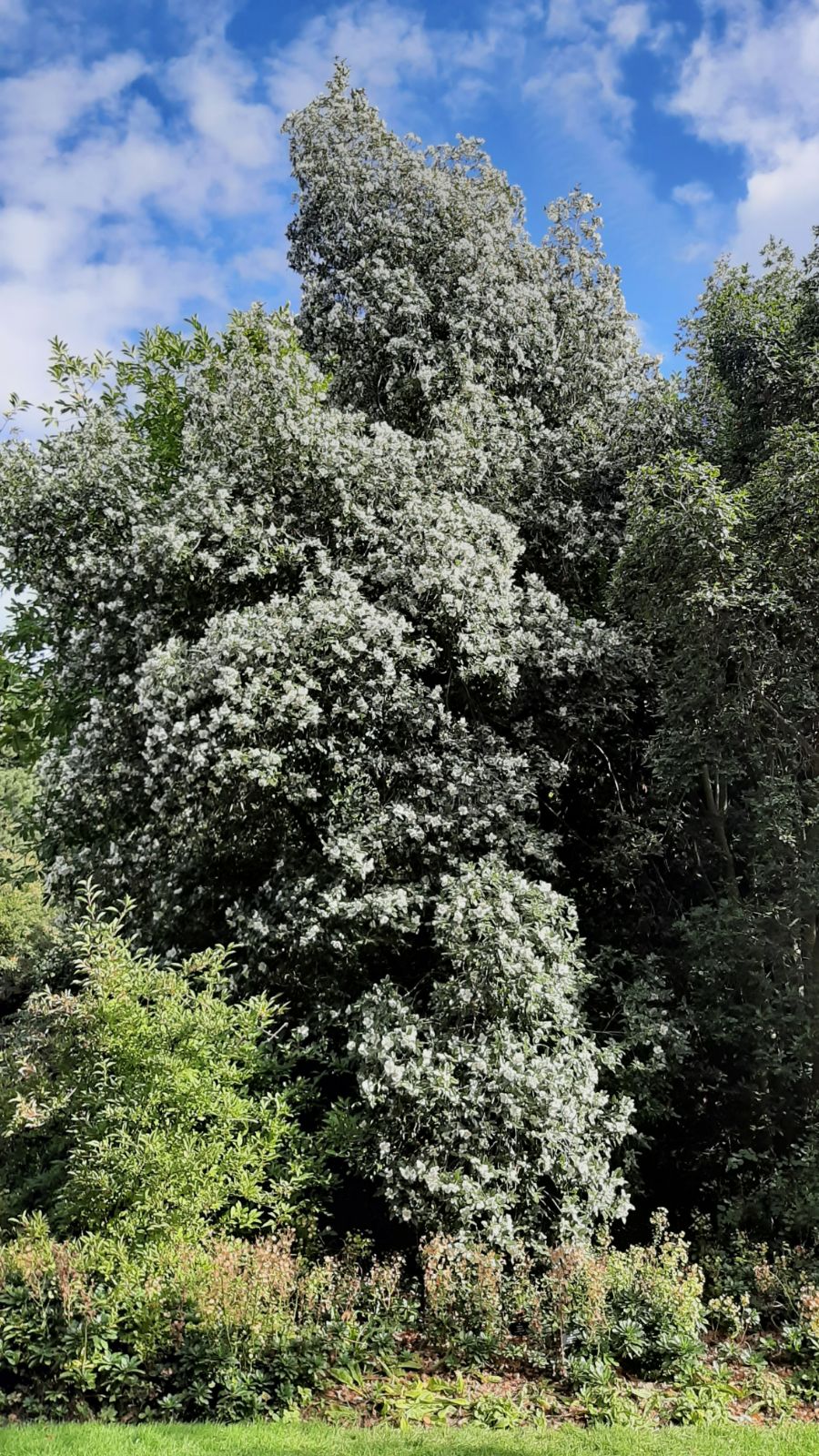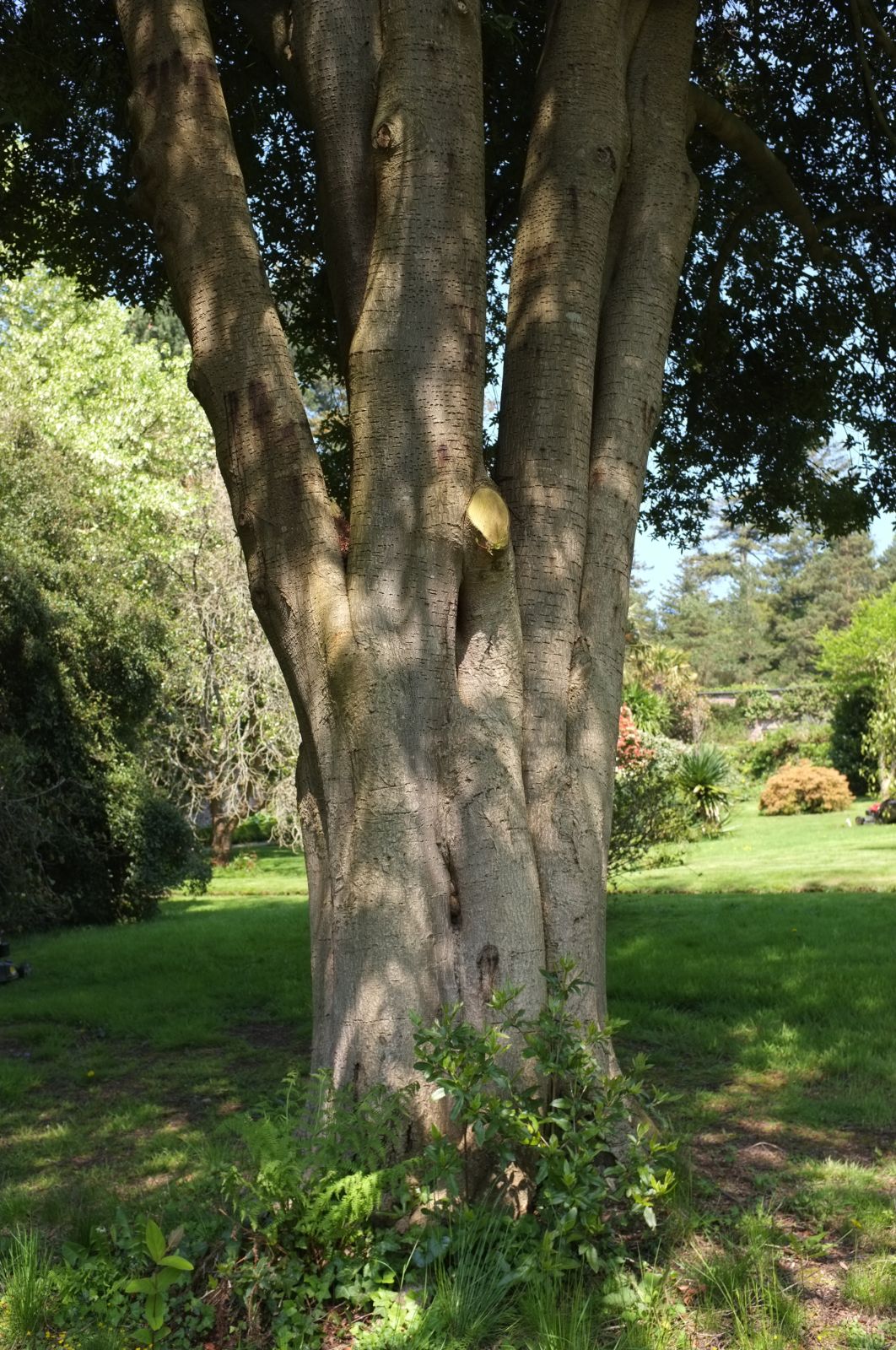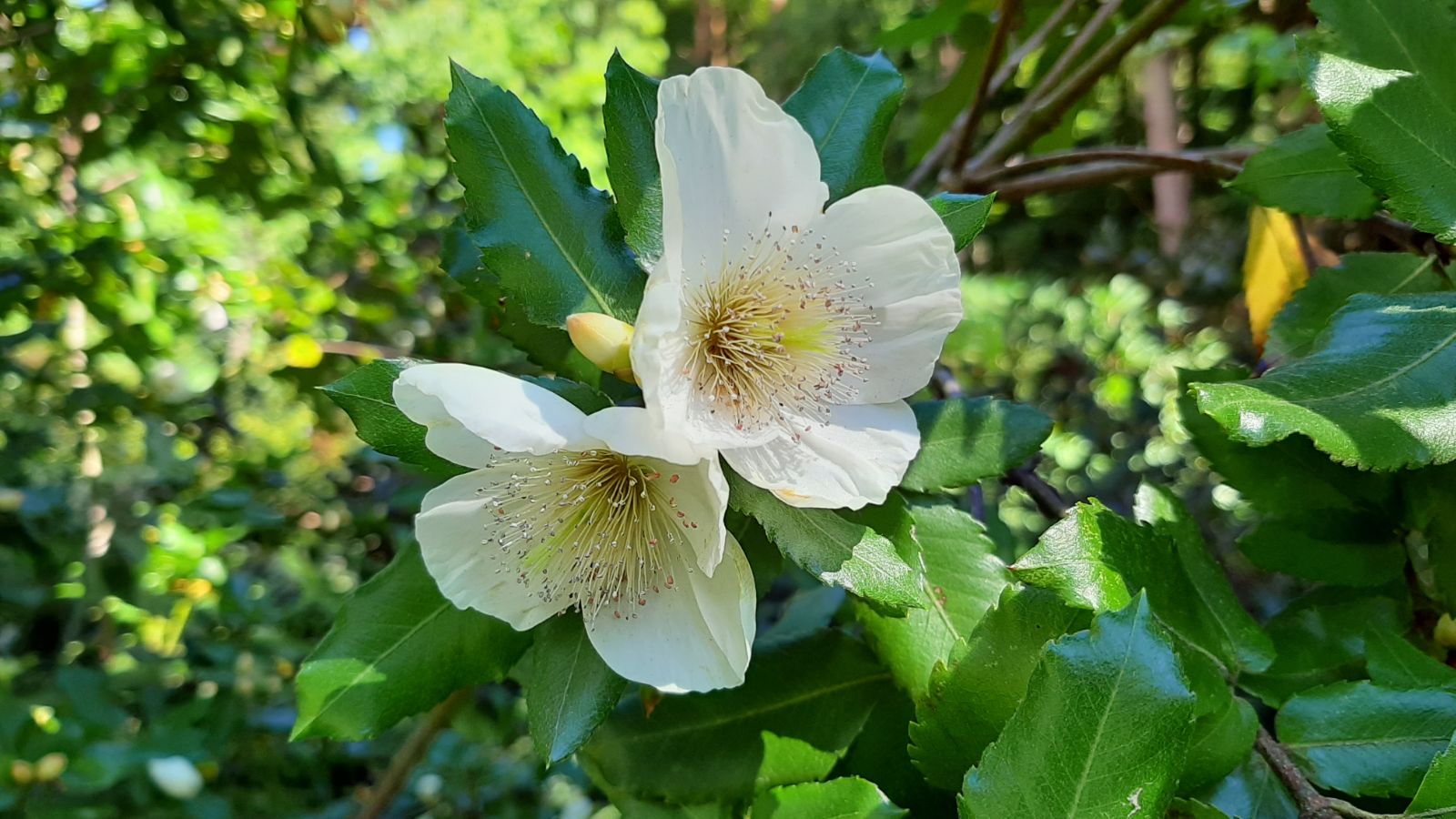Eucryphia × nymansensis
Sponsor
Kindly sponsored by
William & Griselda Kerr
Credits
Tom Christian (2021)
Recommended citation
Christian, T. (2021), 'Eucryphia × nymansensis' from the website Trees and Shrubs Online (treesandshrubsonline.
Genus
Infraspecifics
A garden hybrid between the two Chilean species, E. cordifolia and E. glutinosa. An upright evergreen tree thus far recorded achieving 22 m height, naturally inclined to be multi-stemmed. The foliar characters are intermediate between the parents. The leaves are occasionally simple as in E. cordifolia and in this state are elliptic-oblong or elliptic-lanceolate, 4–8 cm long, but are usually trifoliate-compound as in E. glutinosa, when the size and shape can be very variable but with the terminal leaflet always 1.5–3 times larger than the laterals at up to 8 × 3.6 cm. The leaves are always tough and leathery, dark glossy green above, pale green or glaucous-green below, margins regularly toothed. Both leaf surfaces and shoots are downy when young. Flowers, which can be borne on young plants, open in August and continue into September (in the northern hemisphere) and are pure white or occasionally tinged pink, 4–7 cm across on pedicels of 0.9–1.9 cm. (Bausch 1938).
USDA Hardiness Zone 8-11
RHS Hardiness Rating H5
This hybrid and its cultivar ‘Nymansay’ are named for the Sussex garden Nymans where they arose from a batch of garden-origin seed sown in 1914. Eucryphia cordifolia had first flowered at Nymans in 1909 and the gardeners had sown the resulting seed, hoping to raise a hardier form. It is not known which parent yielded the seed batch from which E. × nymansensis was raised, but a number of seedlings were grown on and subsequently gifted by Lt. Col. Messel, who owned the garden at the time, to various friends. Of the plants retained at the property, two individuals were selected for their outstanding qualities and tentatively named ‘Nymans A’ and ‘Nymans B’. ‘Nymans A’ was later shown at the RHS show in Vincent Square, London, in 1924 and received an Award of Merit (Bean 1981). It was popularised under the name ‘Nymansay’, which was derived from the pronunciation ‘Nymans A’ (Bausch 1938).
Whether by accident or design this cross inevitably occurred more than once, and in more than one location, but whatever their origin subsequent selections of it are assigned to E. × nymansensis. The most commonly encountered clones are discussed below, and where possible diagnostic features and characteristics are included, but the reality is that there is very little to reliably and consistently differentiate these.
Generally speaking, forms of E. × nymansensis make upright evergreen trees 10–20 m tall depending on the growing environment, although a tree of 23 m has been measured at Tregrehan (Johnson 2011). Hybrid vigour has perhaps given E. × nymansensis a greater degree of tolerance to alkaline conditions than either of its parents, and indeed it is probably the most adaptable of all the eucryphias in general cultivation and certainly the most popular. It is cultivated in appropriate climatic zones throughout Europe, North America, Australia and New Zealand.
'Castlewellan'
This cultivar is named for the famous garden in Northern Ireland where it was first selected. Castlewellan has an impressive collection of Eucryphia and a ‘Eucryphia Walk’ is an important feature within the grounds to this day, containing many outstanding examples of various species and forms (Paterson 2018). Two clones of E. × nymansensis were selected here, ‘Castlewellan’ and ‘George Graham’. ‘Castlewellan’ is reportedly closer to its E. cordifolia parent in vegetative characteristics, while closer to E. glutinosa in its floral characters (pers. comm. to S. O’Brien 2018).
'George Graham'
Another clone selected at Castlewellan in Northern Ireland and named for a former head gardener of the property, this cultivar is said to be very similar to ‘Nymansay’ but is typically two or three weeks later to flower. The original tree still grows at Castlewellan and is over 15 m tall (pers. comm. to S. O’Brien 2018). Another has achieved over 14 m height at Baravalla Garden in Argyll and Bute, Scotland, and a tree planted in 1989 at the Sir Harold Hillier Gardens, Hampshire, had reached nearly 11 m by 2008 (The Tree Register 2018). It is commercially available, but must be sought out from specialist nurseries. It is not known whether this clone is cultivated outside the UK and Ireland.
'Mount Usher'
A form selected at the garden of the same name in County Wicklow, Ireland. A tree planted there in 1927 still stands and in 2015 it was 18 m tall with a dbh of 62 cm. Seamus O’Brien (pers. comm. 2018) says that its ‘Leaves [are] more sharply pointed and narrower than ‘Nymansay’, the anthers are lilac and there is a distinct fragrance. Perhaps most importantly, the pedicels of this cultivar are unusually long, giving the blooms a graceful droop, which is less apparent [in] those of ‘Nymansay”. Although it was introduced to the horticultural trade as far back as 1934, it remains relatively scarce.
'Nymans Silver'
A variegated form of ‘Nymansay’ discovered in Nymans garden by Alistair Buchanan in c. 2005. The upper leaf surface is not as dark green as in ‘Nymansay’ and the margin is accentuated by an irregular band of creamy white. The original plant at Nymans was nearly 7 m tall in 2016. This cultivar is now commercially available within the UK and is likely to become a popular garden plant even if only on account of its foliage.
'Nymansay'
The original, and many would argue still the best. Since it was exhibited in 1924, this cultivar has gone on to become one of the most popular late-summer flowering trees in general cultivation. It has been propagated and distributed widely and is now found in gardens across the world’s maritime-temperate climatic zones, on the west coast of North America from southern California to British Columbia, in milder areas of Europe with an oceanic climate and in similar parts of Australia and New Zealand. It has achieved over 22 m height at Glenarn Garden, near Helensburgh, Scotland (The Tree Register 2018).


